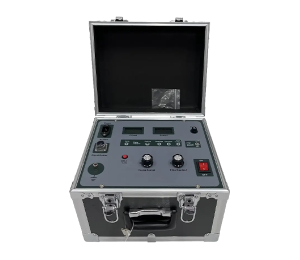 English
English


Exploring the Fundamentals and Applications of Gas Chromatography in Analytical Chemistry Techniques
The Role of Gas Chromatography in Analytical Chemistry
Gas chromatography (GC) is a vital analytical technique widely used in the field of analytical chemistry to separate, identify, and quantify volatile compounds in various matrices. As an essential method in both academic research and industrial applications, GC’s ability to analyze complex mixtures has made it indispensable in fields ranging from environmental monitoring to pharmaceuticals.
The fundamental principle of gas chromatography involves the separation of compounds based on their different volatilities and interactions with a stationary phase within a column. The sample is vaporized and carried through the column by an inert gas, typically helium or nitrogen, which acts as the mobile phase. As the sample travels through the column, compounds interact with the stationary phase, resulting in differential retention times. This separation enables the detection of individual components as they exit the column, providing valuable information about their identity and concentration.
The Role of Gas Chromatography in Analytical Chemistry
In the pharmaceutical industry, GC plays a critical role in the analysis of medications and impurities. The technique is used to ensure the quality and safety of pharmaceutical products by quantifying active ingredients and detecting residual solvents. Pharmaceutical companies utilize GC to comply with stringent regulations set forth by agencies such as the FDA, ensuring that products meet specified quality standards before reaching consumers.
analytical chemistry gas chromatography

Another significant application of gas chromatography is in the field of food safety and quality control. GC is employed to analyze flavor compounds, preservatives, and additives in food products. It also assists in detecting harmful contaminants, such as pesticides and mycotoxins, which poses risks to human health. The ability to swiftly analyze food products for compliance with safety standards contributes to the overall assurance of food quality.
The implementation of GC has been further enhanced by the advent of various detector technologies. Detectors such as flame ionization detectors (FID), mass spectrometry (MS), and thermal conductivity detectors (TCD) provide different levels of sensitivity and specificity. Mass spectrometry, in particular, has transformed gas chromatography by enabling the identification of compounds based on molecular weight and fragmentation patterns, making GC-MS a powerful tool for complex mixture analysis.
Moreover, advancements in technology have led to the development of automated systems and techniques, such as headspace analysis and solid-phase microextraction (SPME). These innovations have streamlined sample preparation and improved throughput, allowing for higher efficiency and productivity in analytical laboratories.
In conclusion, gas chromatography is a cornerstone of analytical chemistry, providing unparalleled capabilities for the separation and analysis of volatile compounds. Its applications span across various domains, including environmental monitoring, pharmaceuticals, and food safety, underscoring its importance in ensuring the safety and quality of products we encounter daily. As technology continues to advance, the role of gas chromatography in analytical chemistry is likely to expand, offering even greater insights into complex chemical analyses.
-
Differences between open cup flash point tester and closed cup flash point testerNewsOct.31,2024
-
The Reliable Load Tap ChangerNewsOct.23,2024
-
The Essential Guide to Hipot TestersNewsOct.23,2024
-
The Digital Insulation TesterNewsOct.23,2024
-
The Best Earth Loop Impedance Tester for SaleNewsOct.23,2024
-
Tan Delta Tester--The Essential Tool for Electrical Insulation TestingNewsOct.23,2024





